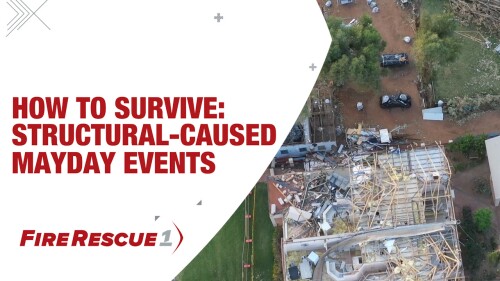This article was originally published in the digital edition “The Mayday Training Evolution.” Download the full edition for more mayday content.
By Scott Ebbert
Rapid intervention team (RIT) and mayday training in the fire service present a variety of unique challenges, particularly as, within our culture, we struggle to admit and act on our own vulnerabilities. We read, study and dissect near-miss and LODD reports, often concluding that similar events won’t repeat within our own realm.
It’s easy, particularly during difficult times, to lose sight of the standards we set for training and performance. Staffing and budget shortages, task saturation and other challenges often toss RIT training onto the backburner. However, chief officers must understand that developing and maintaining a culture of mayday and RIT training will result in a safer workforce and improve their department’s performance overall.
Invest in prevention
The importance of RIT training is irrefutable, but a parallel effort must be made to develop policies and training that will help to prevent the mayday. Your department must focus first on training that prepares firefighters to make good decisions that will keep them out of trouble in the first place.
It begins with recruit and new member training programs, which must be fully supported by fire department administrators.
Understanding and executing the basics sets the foundation for success. Modern fire behavior, knowledge of building construction, hose stream selection and placement, orientation, ventilation, and ongoing risk assessment are fundamental to good decision-making. A solid focus on mastery of the basics provides the tools that firefighters need to reduce the risk of a mayday.
When developing department training schedules, training officers should prioritize safety and survival skills that will enhance the confidence and ability of firefighters when operating on the fireground. Don’t fall into the trap of waiting for resources that may never come. No amount of funding or staffing can change the culture of RIT training overnight.
Embrace the concept of “active RIT” to play an integral part in mayday prevention. Training should include best practices and tactics that can be employed by the active RIT. Ground ladder deployment, forcible entry, removal of window bars, and handline deployment are all mastery skills that the troops can get behind.
The devil is in the data
The fire service has made significant strides in the collection of information. Funding, staffing, resource allocation, and training all heavily rely on data. Historical data from programs such as Firefighter Near Miss and Project Mayday provide resources for real-world close call scenarios and statistics from which training officers can draw to develop current and relevant training programs.
Further, command staff should take interest in mayday, near-miss and LODD data, not only specific to their own departments, but within the region as well. A deep dive into LODD and injury reports can reveal holes in your own SOP/SOGs. Our ability to learn from those we’ve lost is the ultimate show of respect and honor.
While working behind the scenes to firm up those policies, communication to the firefighters is essential. Easy-to-read safety or near-miss bulletins can be shared to draw attention to incidents of interest and bolster member buy-in to subsequent training programs. Remember, members are more likely to engage in training and education programs if they know and understand the “why.” The collection and analysis of data will help to identify trends and create purposeful training and educational opportunities within your department.
Set the tone
The development and execution of department-wide RIT training must be based on clear, achievable objectives that align with the culture you wish to strengthen. Company and chief officers must reinforce SOP/SOGs and consistently hold members accountable in order to cultivate the success of RIT on the fireground.
Lay out the expectations you have for your team, and clearly define the non-negotiables. For example, when setting the rundown for a shift, assign specific RIT duties to the members of your crew. Taking a moment to discuss those assignments clarifies what you expect and provides the opportunity to confirm that your team understands those responsibilities and owns them.
Leaders should emphasize the importance of remaining disciplined and resist the urge to freelance or abandon their assignment when a mayday is called. RIT training programs should include scenarios that challenge members to remain focused and engaged on their assigned task. Delays in fire suppression or searches exacerbate fire conditions, add to the victim count, and complicate RIT efforts.
From the top down
The development of RIT/mayday training does not need to be overly complex or daunting. Basic RIT competencies can be built upon with a recurrent training plan. The measure of success in RIT/mayday training is predicated on how crews routinely perform on every fireground. Therefore, leaders cannot allow RIT policies and procedures to become stagnant. Don’t hesitate to evaluate how you do things and tweak it whenever necessary. An incessant focus on training and unwavering support from the top down will help to develop a strong culture of safety and survival within your organization.
About the author
Scott Ebbert has over 28 years of experience in both the career and volunteer fire service in Baltimore County, Maryland. He is the chief of training for the Baltimore County Fire Department as well as a former captain and life member of the Providence Volunteer Fire Company. Ebbert has a background in fire investigation and serves on the International Association of Arson Investigator’s Health & Safety Committee. He is also a department safety officer and has dedicated much of his time and effort into occupational cancer awareness and prevention.
This article, originally published on July 10, 2023, has been updated.















